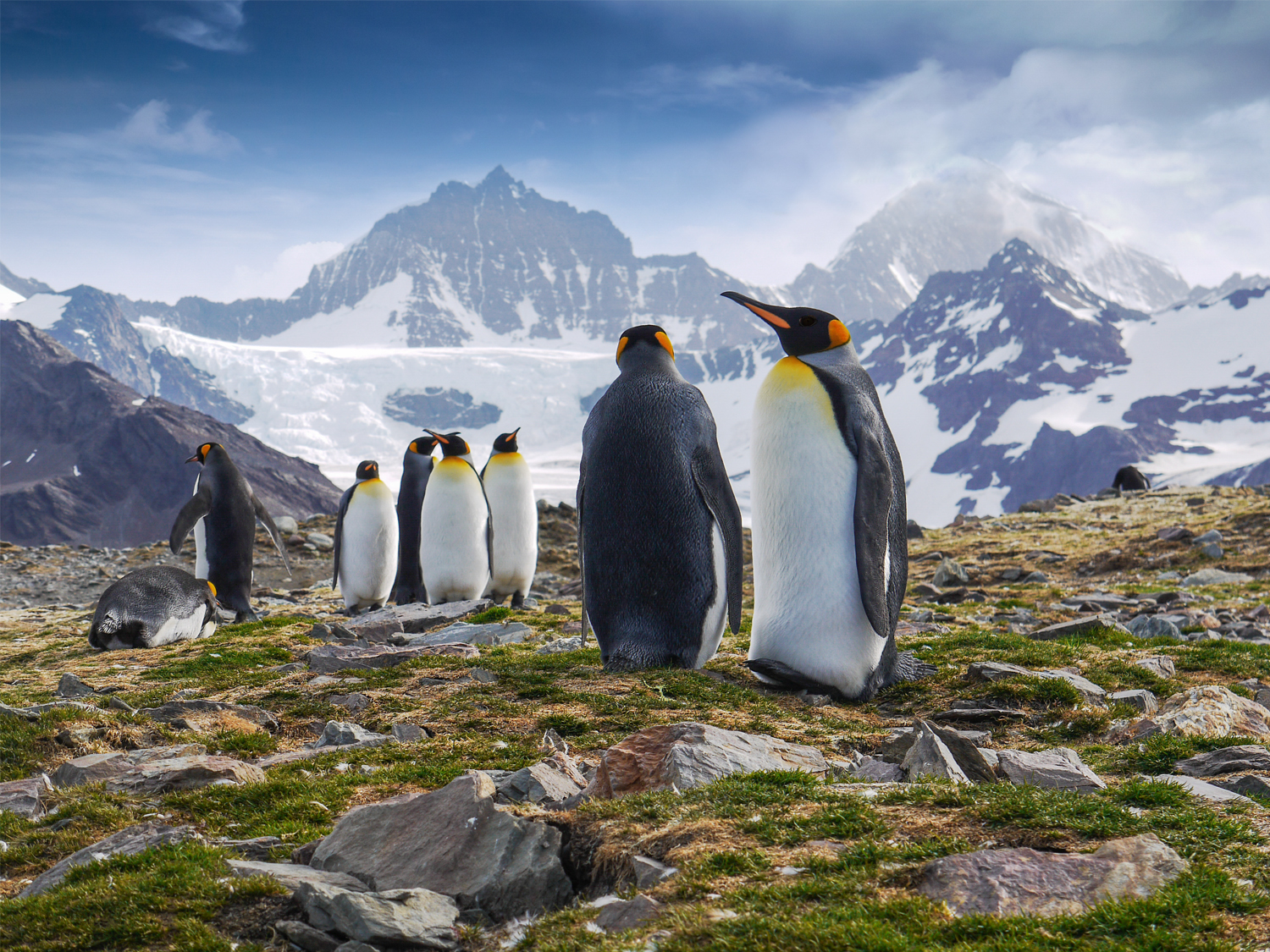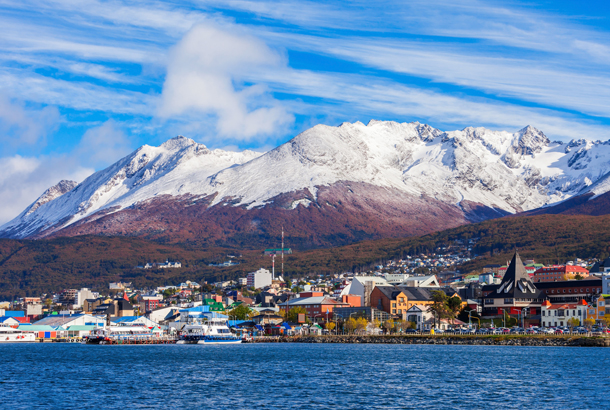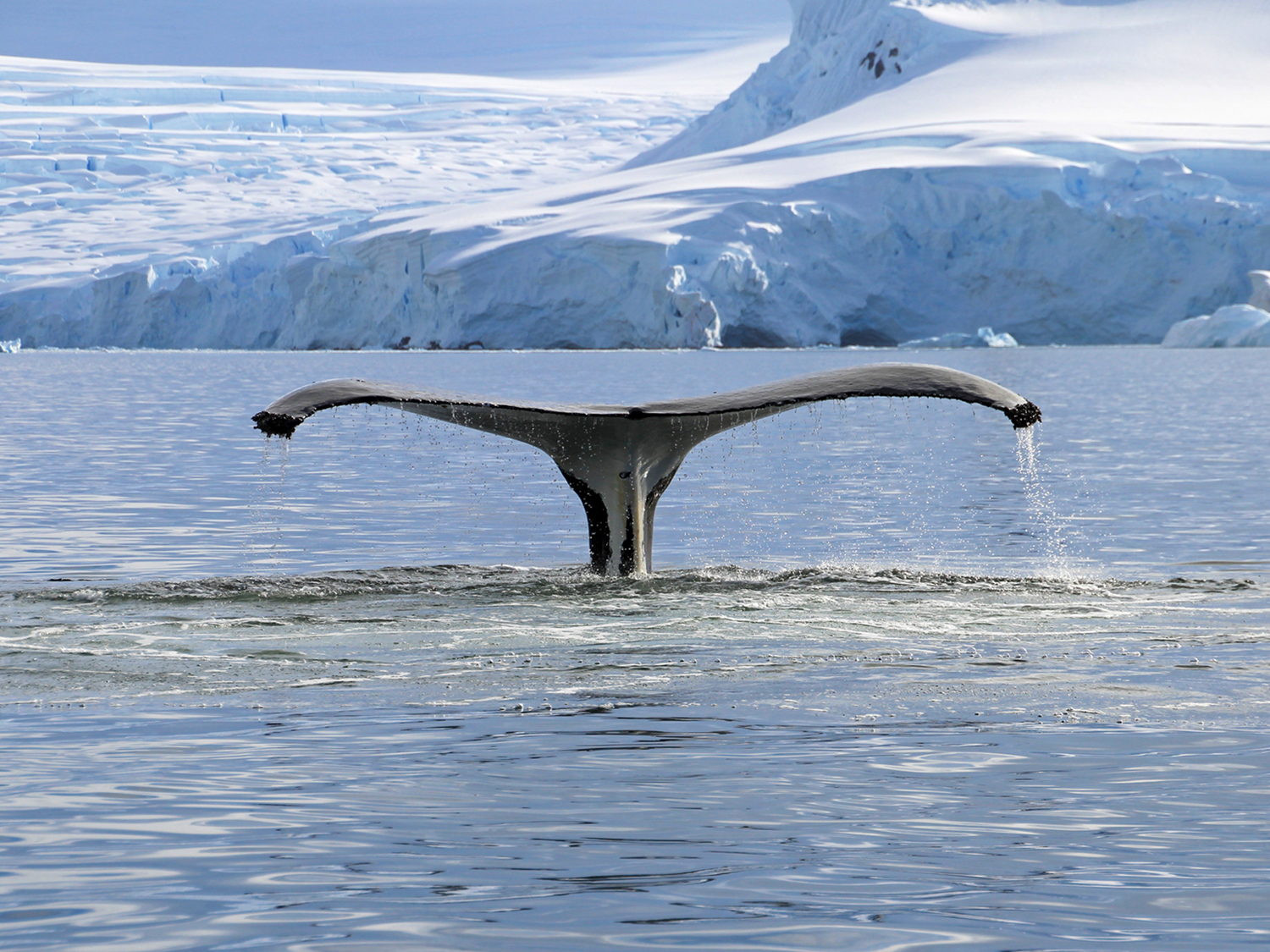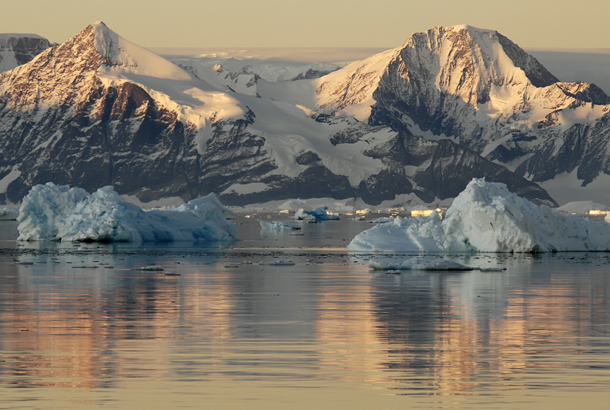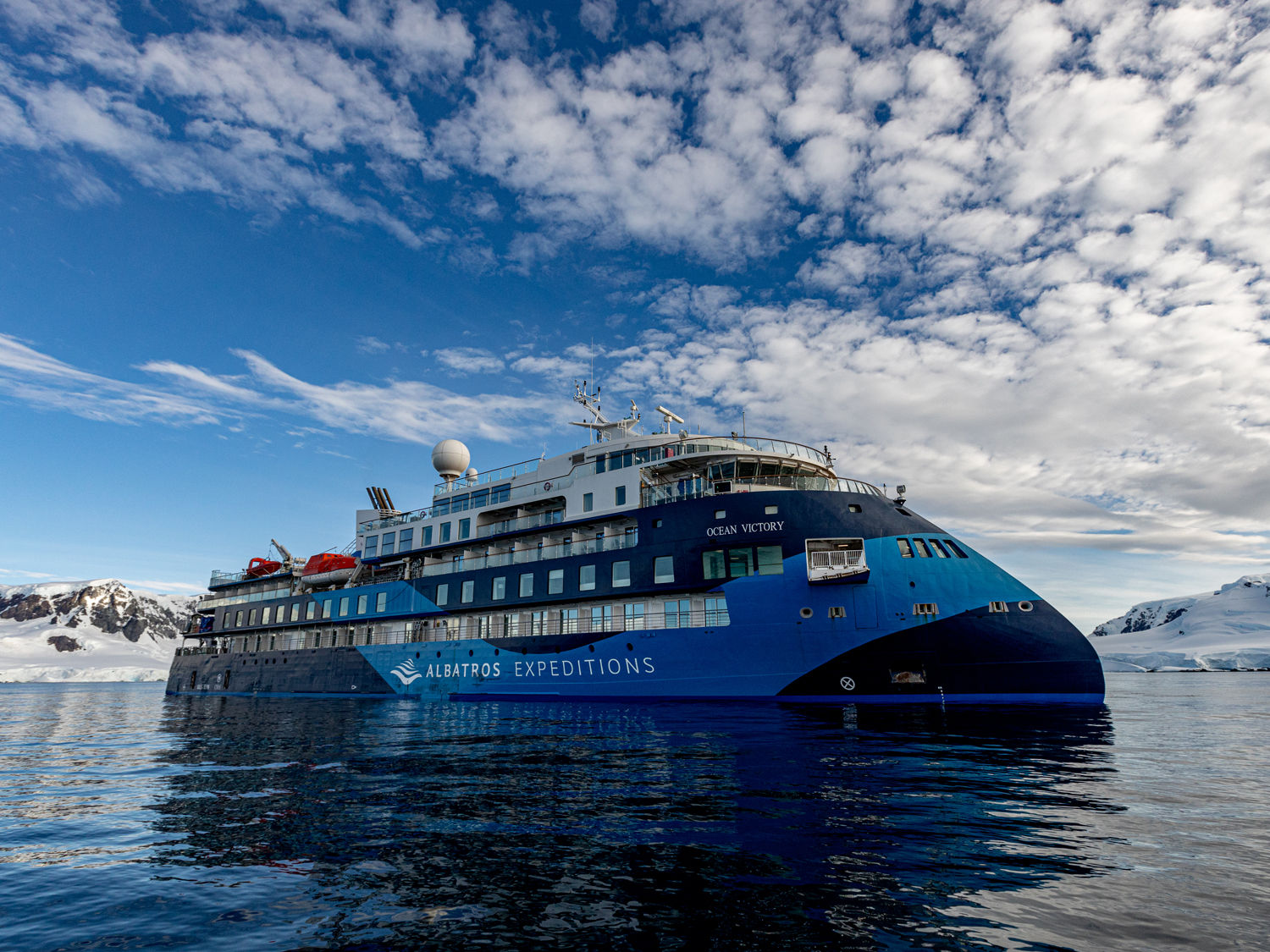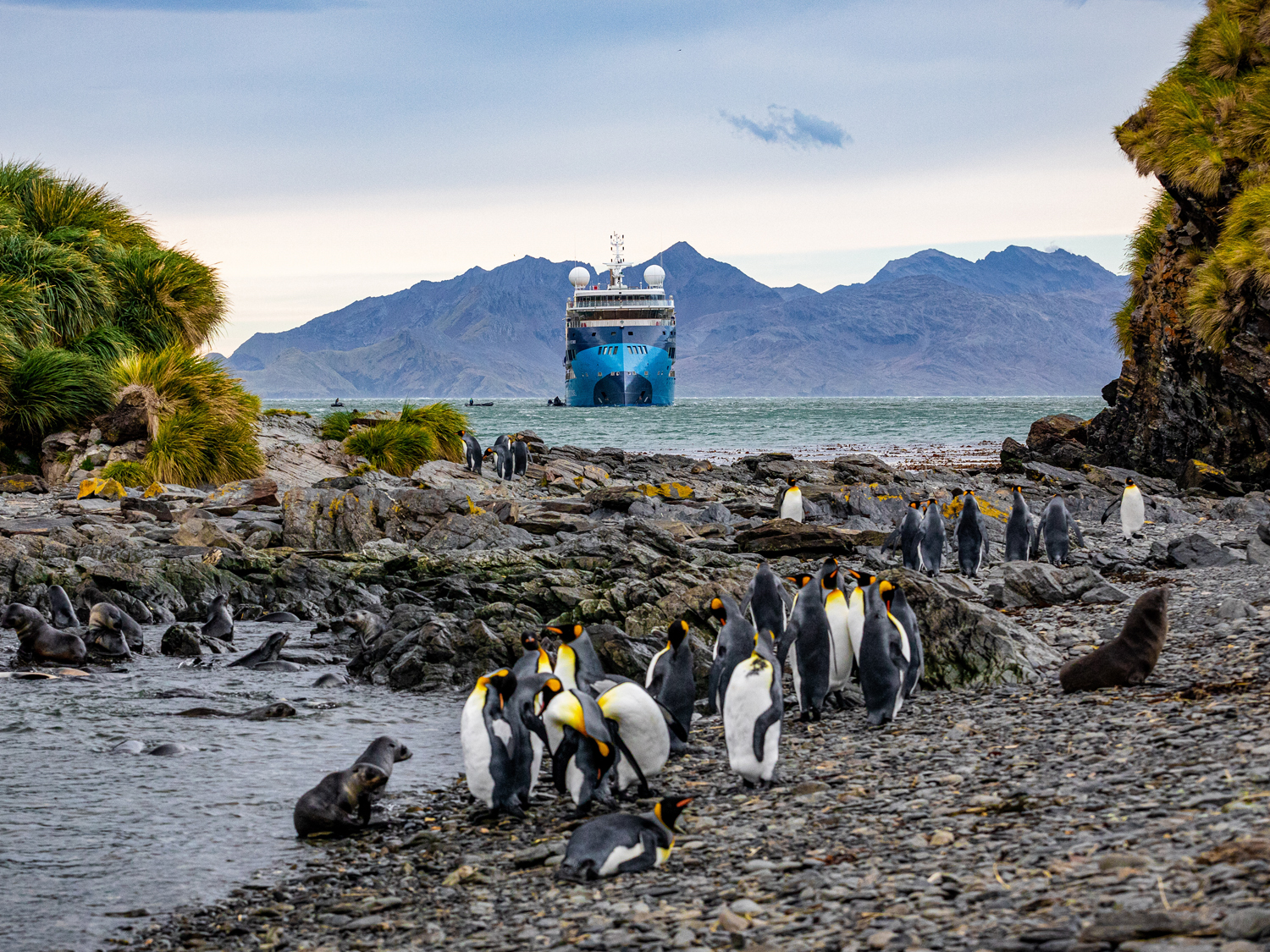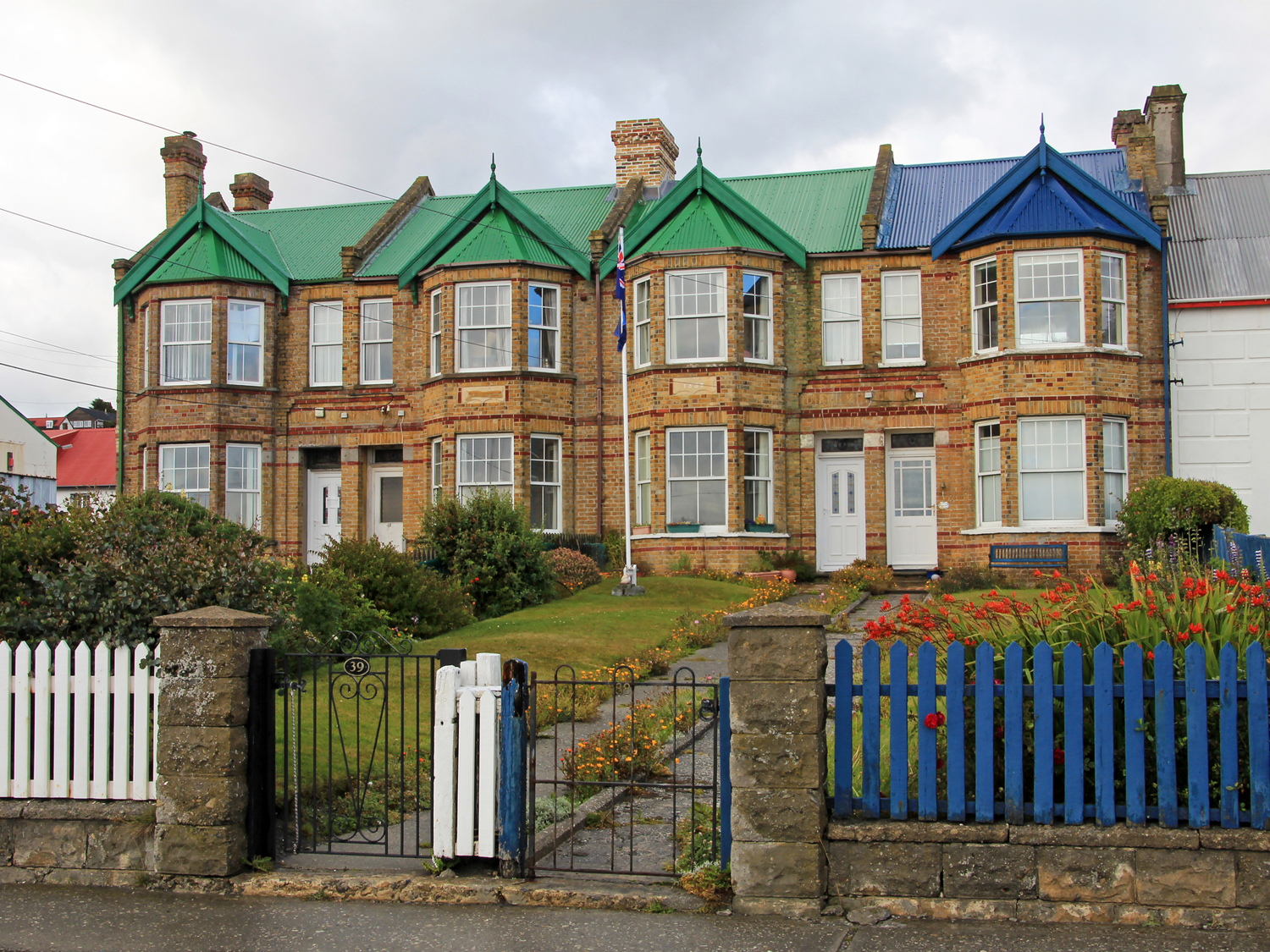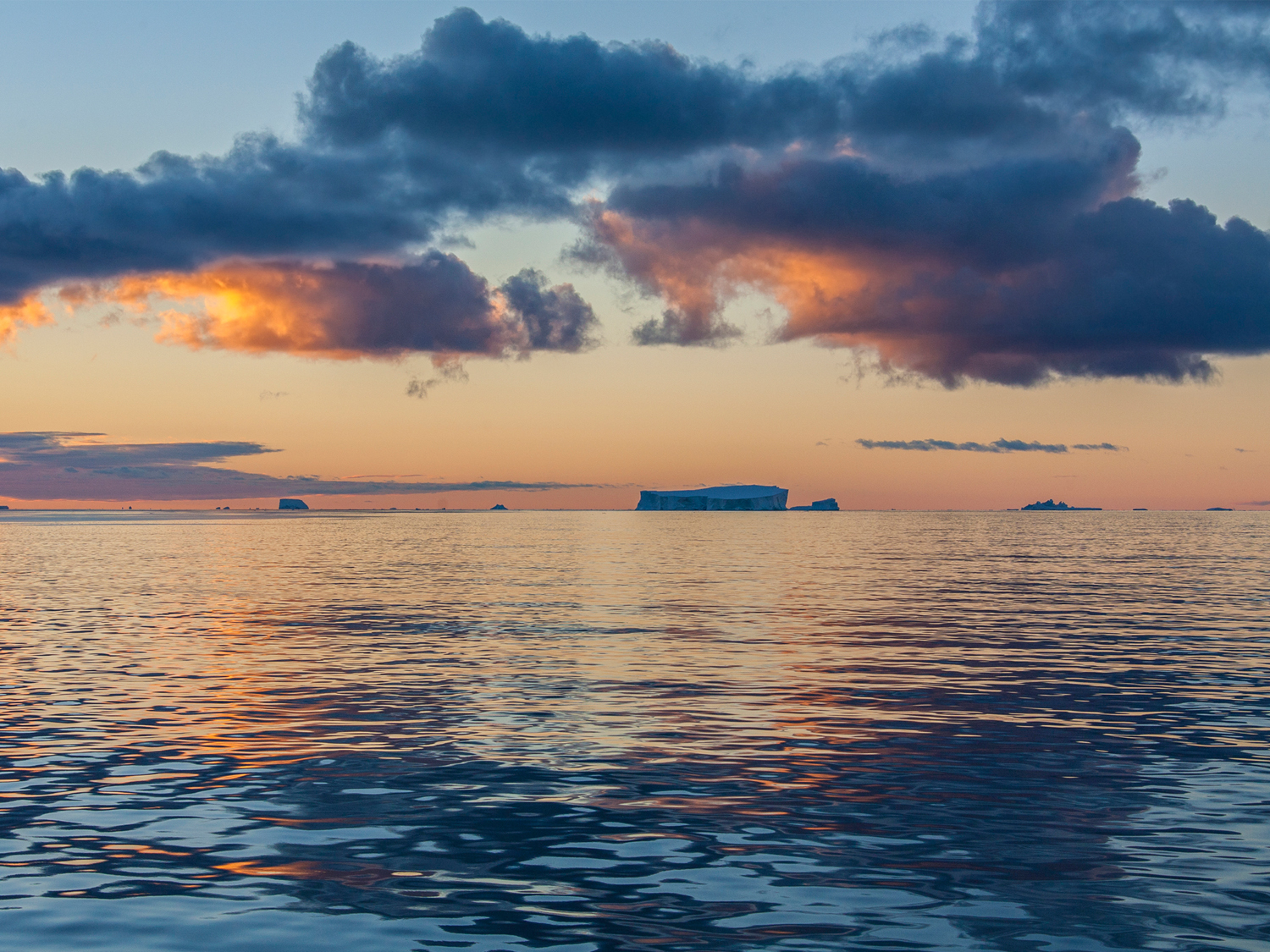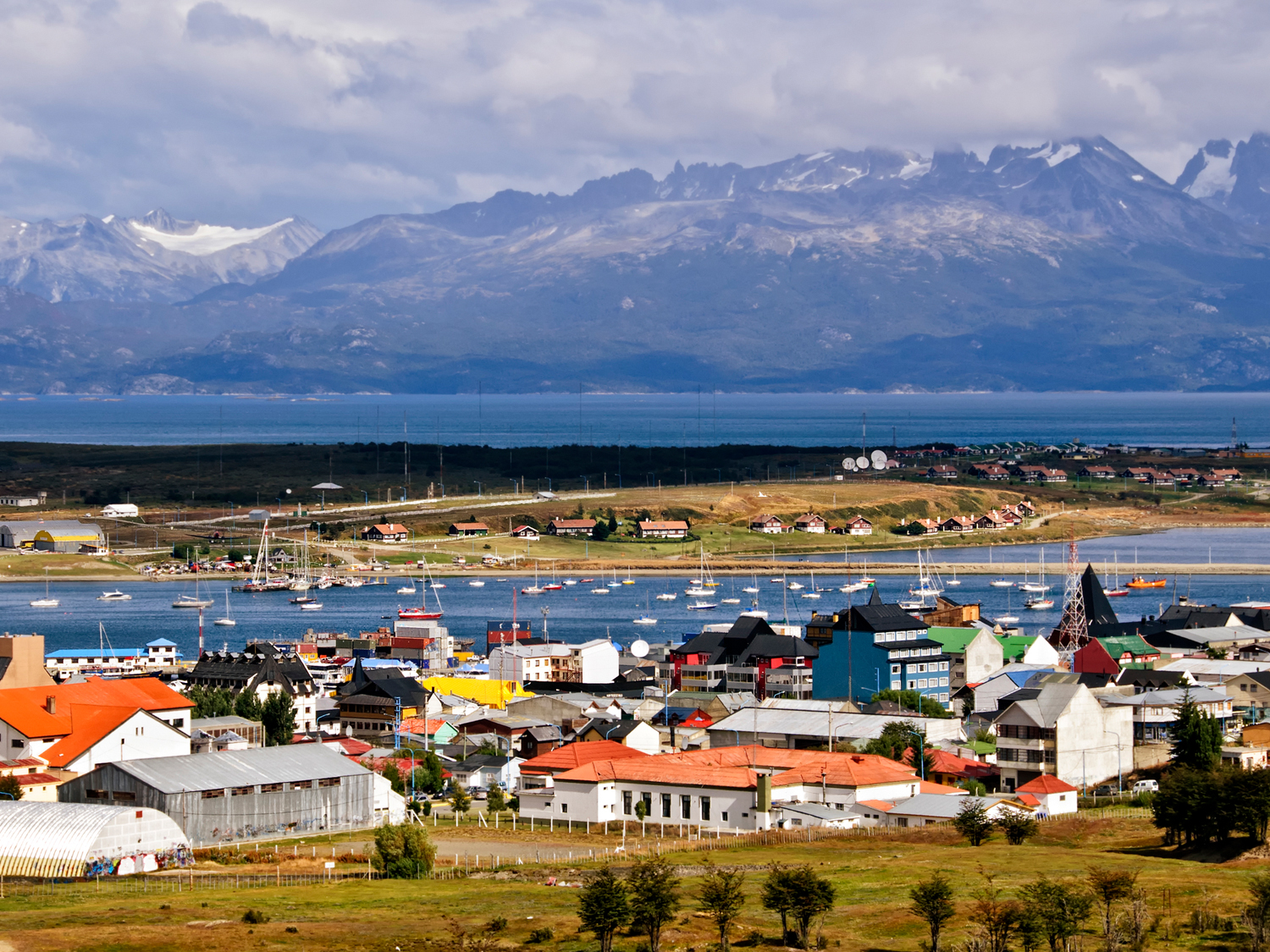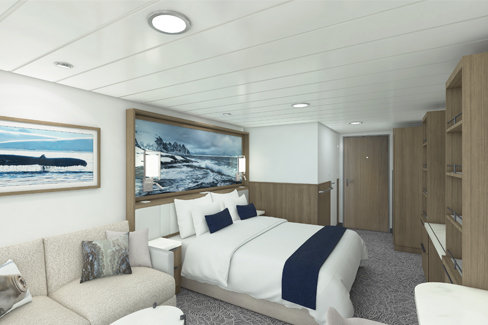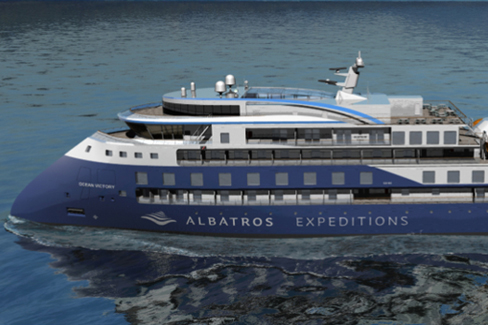Excellent
Antarctica, South Georgia & Falklands Explorer
Embark on a once in a lifetime expedition on this 19 day Antarctic cruise starting in Ushuaia. Travel through the Drake Passage and discover Elephant Island, famous for the story of Shackleton's heroic quest. Visit South Georgia and see its rugged mountains, icy peaks, and stormy shores. Explore the Falkland Islands, learn about its interesting history and marvel at the incredible array of wildlife including penguins, whales, and seals.
For a detailed itinerary and information about visas, money, weather and more download our Trip Notes
Tour Overview
Duration
19 daysStarts
UshuaiaEnds
AntarcticaRange
HandpickedTour Guide
Yes - Expedition crew and naturalistsGroup Size
Minimum age
15 yrs, accompanied by an adultDeparts
Hotel Rating
Ocean Albatros or Ocean Victory ShipsCountries
AntarcticaArrival Transfer
NoDeparture Transfer
NoMeals included
Breakfast: 18, Lunch: 17, Dinner: 18Excellent
4.4 out of 5 based on
275 reviews
Tour Highlights
Included
Not Included
Itinerary
Day 1 - Setting Sail
Day 1 - Setting Sail
Welcome to Ushuaia! As the world's most southern city, Ushuaia's nickname of 'the end of the world' is well deserved. On arrival, make your way to the port and board our home for the next two weeks, the Ocean Albatros or Victory expedition ship. After enjoying a refreshing welcome cocktail our expedition begins as we set sail through the famous Beagle Channel (named after Charles Darwin's ship) towards Drake Passage.
If arriving into Ushuaia with plenty of time, you may wish to take a day trip to the picturesque archipelago of Tierra del Fuego, home to some of the most breathtaking scenery in the world with rugged snow-capped mountains, glaciers and flower-filled meadows.
Please Note: Trips that depart in November or December will often have the same itinerary and spend the same amount of days at each location, but the route will be inverted - following this plan: Ushuaia, Falkland Islands, South Georgia and Antarctic peninsula.
Days 2-3 - Crossing the Drake Passage
Days 2-3 - Crossing the Drake Passage
For the next two days we sail through the challenging Drake Passage, famous for its rough conditions and strong westerly winds, called the Roaring Fifties. Our expedition vessels are well-equipped with stabilizers, powerful engines, and a skilled crew for your comfort. Crossing the Drake Passage is a notable achievement.
During our time in the Drake Passage, we'll prepare for Antarctica. Our Expedition Leader will provide safety guidelines and tips for minimizing our impact on this fragile environment. Our Expedition Team will help with biosecurity measures and offer lectures on Antarctic history, wildlife, geology, and more.
On the third day, we'll cross into the Antarctic Convergence, experiencing a sudden drop in temperature as we enter Antarctic waters. This region teems with wildlife, including petrels, albatrosses, penguins, seals, and whales. Weather permitting, we may be able to make landfall on the South Shetland Islands on our second day in the Drake Passage, beginning our exploration of Antarctica.
Days 4-7 - The Antarctic Peninsula & South Shetland Islands
Days 4-7 - The Antarctic Peninsula & South Shetland Islands
Our journey begins in the South Shetland Islands, the northernmost part of Antarctica, known for its rich wildlife, including Gentoo and Chinstrap Penguin colonies and impressive seabirds like Giant Petrels. We'll marvel at the ice-clad mountains of Livingstone and King George Islands before we explore places such as Deception Island with its volcanic crater, Aitcho and Half Moon Islands with their vibrant penguin colonies, and the historical site of Yankee Harbour.
Next, we'll head further south to the Gerlache Strait region on the Antarctic Peninsula. This icy wonderland boasts massive icebergs, glaciers, penguins tending to their nests on Cuverville Island, and hikes over active glaciers in Neko Harbour. We'll also visit historic huts such as Damoy Point and may even witness humpback whales in action in Wilhelmina Bay. As our vessel sails towards the tip of the Antarctic Peninsula en route to South Georgia, we might have the opportunity to explore Elephant Island. This is the legendary island where Shackleton's men endured several months of harsh conditions while their leader embarked on a heroic quest for rescue – a remarkable tale of human survival and resilience.
While our specific stops depend on conditions, our Expedition Leader will keep you informed during evening briefings. Our expert Expedition Team will enhance your experience with insightful talks. Antarctica's weather is highly unpredictable, and safety is our top priority. If conditions restrict off-vessel activities, we will enjoy lectures, wine-tasting, hot tubs, or spa treatments aboard the comfortable vessels.
Days 8-9 - Onwards to South Georgia
Days 8-9 - Onwards to South Georgia
Leaving Antarctica behind, we embark on the Drake Passage once more, this time tracing the path of Sir Ernest Shackleton's epic journey aboard the James Caird. While Shackleton's ordeal lasted a gruelling seventeen days in a small wooden lifeboat, your voyage benefits from our vessels' powerful engines and specially-designed X-Bow, completing the journey in just two days.
To safeguard South Georgia's delicate ecosystem, the dedicated Expedition Team will help you with biosecurity measures. They'll also continue their enlightening lecture series, focusing on South Georgia's captivating history, biology, and wildlife. Don't forget to bundle up and join the Expedition Team on deck – this part of the Scotia Sea, which includes the Drake Passage, teems with life, from whales and albatross to penguins and seals. Keep an eye out for the unique mix of sub-Antarctic and polar species, like fur seals and Adelie Penguins, creating a captivating ecological blend.
Days 10-13 - Exploring South Georgia
Days 10-13 - Exploring South Georgia
South Georgia, a land of rugged mountains, icy peaks, and stormy shores, once held a foreboding reputation. Captain James Cook is said to have first set foot here, but its initial appearance was stark and intimidating. However, a closer look reveals greenery amidst the ice, life on its beaches, and birds soaring above.
In the past, South Georgia faced environmental devastation. Sealers and whalers descended upon it, mercilessly hunting seals and whales. Reindeer, introduced by Norwegian whalers, damaged native vegetation, while brown rats, unintentionally brought by Europeans, ravaged seabirds and their eggs.
Thankfully, extensive conservation efforts, including the removal of reindeer and rats, have restored South Georgia to its former glory. Its beaches now teem with elegant King Penguins and Antarctic fur seals competing for space. Southern elephant seals, Earth's largest, are also present. South Georgia Pippits and Pintail Ducks, once nearly extinct, thrive, while various bird species nest on steep hillsides and cruise the skies. In the sea, leopard seals hunt penguins, fur seal pups play, and a variety of whales feast on krill. South Georgia boasts unrivalled wildlife diversity and abundance, a true marvel to witness.
Our itinerary will depend on weather, sea conditions, and winds, but the experienced Expedition Team and Captain will strive to maximize exploration opportunities. Options include visiting massive penguin colonies, exploring former whaling stations, admiring seal colonies, and immersing in exploration history at Grytviken, where Sir Ernest Shackleton is buried. South Georgia leaves an indelible mark on the senses, captivating visitors long after their departure.
Days 14-15 - Continuing to the Falklands
Days 14-15 - Continuing to the Falklands
Leaving South Georgia's icy peaks, we head toward the Falkland Islands (Malvinas). Although separate British Overseas Territories, these two places share a close history. South Georgia was administered from the Falklands for much of its past and still relies on Falklands' support. Unlike South Georgia, the Falklands have their own government, society, and culture.
When Europeans arrived in the early 16th Century, there were no indigenous people on the Falklands. The islands' sovereignty has been disputed, with claims from Spain, France, Britain, and Argentina. They became a British colony in 1840. In 1982, a conflict between Britain and Argentina over the islands had a lasting impact, including development assistance and a significant minefield. However, the Falklands have since thrived, thanks to their valuable fishing rights. The de-mining operation was completed in 2020, celebrated with a football match between the islands’ Governor and the Zimbabwean de-mining team.
The waters between South Georgia and the Falklands are incredibly rich, with abundant whale, seal, and penguin populations where cold Antarctic waters meet the warmer South Atlantic. Keep your binoculars handy as we cross the Antarctic convergence, especially near Shag Rocks. You can also attend lectures by the Expedition Team to learn about the islands' captivating history, biology, and the unique 'Kelper' culture of the locals.
Days 16-17 - Stanley and the Falkland Islands
Days 16-17 - Stanley and the Falkland Islands
In the morning, we approach the Falkland Islands, anchoring in Port Stanley's sheltered natural harbour in the early afternoon. Using our Zodiacs, we'll land in the heart of this quaint city, the only significant settlement on the islands, with around two thousand residents. Stanley exudes a distinctly British charm, with Victorian houses along the harbourfront, red telephone and post boxes by the jetty, and cosy pubs serving classic fish and chips and ale. The Falkland Islanders take pride in their unique homeland, and Stanley is a delightful place to explore and absorb the local atmosphere. Must-visit spots in the city include Christchurch Cathedral, the southernmost Anglican cathedral globally, as well as charming shops offering local products, inviting cafes, welcoming pubs, and several exceptional museums.
On our second day in the Falklands, we'll venture to the outer islands, known as 'Camp' by the locals. These remote islands are more rugged and home to most of the archipelago's wildlife. Islands like West Point, Carcass, and Saunders are renowned for their spectacular wildlife, including Southern Rockhopper Penguins, Black-Browed Albatrosses, and King Cormorants nesting together in vast cliffside colonies. Look up to witness the impressive albatross landings. The islands are also teeming with other bird species, including the cheeky Striated Caracara. In the waters, you can spot species like Commerson's dolphins and South American sea lions at play.
Day 18 - Return to Ushuaia
Day 18 - Return to Ushuaia
Leaving Antarctica, we sail north across the infamous Drake Passage heading back towards the Beagle Channel and the shores of Ushuaia. Whilst at sea there are numerous activities on offer. You can relax with a cocktail in the Nordic Bar, listen in on lectures by the passionate and knowledgeable Expedition Team in the Shackleton Lounge, or simply gaze at the Albatrosses travelling north alongside the ship.
On the final evening aboard the ship we join the Captain and Officers for a Farewell Cocktail Party, followed by a presentation of photos and videos by the onboard photographer, allowing us to relive our Antarctic adventure.
Day 19 - End of the Adventure
Day 19 - End of the Adventure
After we arrive back at Ushuaia in the morning we enjoy a final breakfast and say goodbye to our crew before disembarking.
Tour Reviews
Extras and add-ons
If you'd like to add extras or add-ons to your booking, you can do this easily during checkout. Just review the available options and select any additional services or upgrades you'd like before completing your purchase.
Cruise Ship
Prices & Dates
The prices shown are per person based on twin occupancy sharing a Category D State Room with porthole on the Ocean Albatros and Ocean Victory ship. Single Room prices below are based on Category G Single Room with porthole. There are other cabin categories available, including Category F triple cabins. Please contact us to check availability and prices for all cabins. ROOM SHARE OPTION: If you are a solo traveller and happy to share a cabin with another solo traveller of the same gender, there is a room share option on Category C / C Superior cabins. This is a specialist voyage and availability is limited. This trip cannot be booked online, please contact us.
Similar Tours
Explore more exciting tours in Antarctica to discover even more unforgettable adventures!
Our customers say
Excellent
4.4 out of 5 based on 275 reviews


